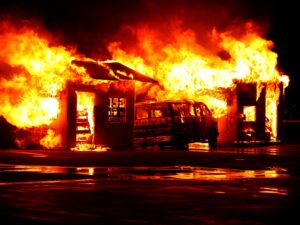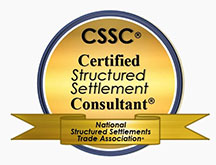Structured Settlements: Fire Losses
Ninth in a series of blog posts dedicated to helping clients decide when a structured settlement should be considered.

Today’s Installment: Fire Losses
August 27, 2019 – The vast majority of claims and lawsuits requiring structured settlements involve some form of personal, physical injury.
Structured settlements can come in handy when resolving a wide variety of non-injury claims, however, and fire damage losses represent one such category of claims.
Sometimes fire damage is limited to a single residence or building and a homeowners policy is sufficient to fully compensate the owner.
Other times, wildfires cover tens of thousands of acres, claim the lives and property of large numbers of people and cause billions of dollars’ worth of damage.
Not surprisingly, lawsuits for negligence are often alleged when major fire losses occur and, because of the often-wide disparity between damage and available coverage, understanding the tax complexities stemming from these losses and how best to approach resolution become chief considerations.
Are Taxes Owed on Fire Loss Claims?
One of our firm’s favorite tax resources is anything published by Robert W. Wood, a nationally recognized tax attorney specializing in matters of taxation as they pertain to physical and non-physical injury settlements and verdicts.
An excerpt from his popular Tax Alert series recently teed up this topic for us in “How IRS Taxes Fire Victims.”
An oversimplified version of the tax treatment applied to fire losses can be gleaned by examining a fundamental tenet of tax liability, to wit: to the extent recovery from a loss does not exceed the pre-fire value of the property, any money recovered via a settlement or verdict should be a non-taxable event.
But as Rob’s summary makes clear, it’s best not to assume since different rules apply to different situations and there can be much to consider.
Punitive damages might also be awarded in some fire damage lawsuits if a jury finds sufficient evidence to determine the defendant’s conduct warranted them. In such instances, a verdict could easily push the recovery well above the replacement cost of the property and create even more tax challenges for the property owner.
Non-qualified Assignments
Structured settlements for non-physical injury claims such as fire losses are usually accomplished using a non-qualified assignment process which permits the settling defendant to close its file when the claim is concluded while permitting the plaintiff to defer recognition of portions of the settlement into future years.
Deferring income and any accompanying taxes into future years is a recognized strategy as old as the tax code itself. Structuring fire losses can create tax efficiency for the plaintiff and frequently permits polarized parties to resolve differences when negotiation stalemates occur.
Last year’s Camp Fire in Northern California was one of the deadliest wildfires ever recorded. Pacific Gas & Electric (PG&E) is at the center of liability theories for losses stemming from this destructive wildfire. The law firm of Walkup, Melodia, Kelly & Schoenberger is one of several firms representing impacted individuals and families of the Camp Fire and provides regular updates on the litigation.
It’s worth mentioning that many fire losses will also involve a component of personal, physical injury. In addition to loss of life, many individuals who survive fires suffer burns and respiratory damage as a result of smoke inhalation. Fire losses causing such personal, physical injuries would qualify as tax-free damages under 26 U.S.C. § 104(a)(2).
It’s not unreasonable to expect some fire losses might result in a combination of tax-free and taxable damages being paid when the claim or lawsuit is resolved. In those instances, qualified tax advice should always be at the forefront of one’s resolution strategy.
Posted: August 27, 2019 | by dan | Category: Blog, Structured Settlements

















